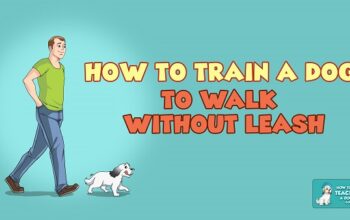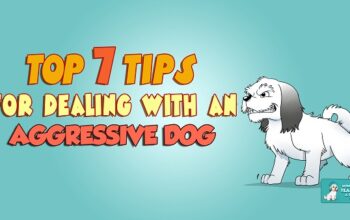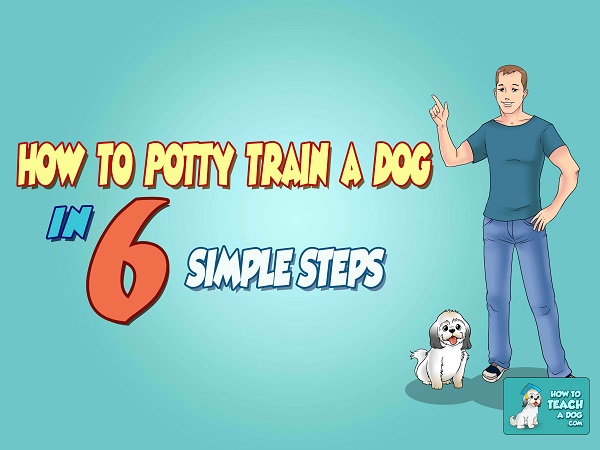
Potty training your dog is fundamental and can be easier than you think.
Here are 6 simple steps on how to potty train a dog.
1 – Show Your Puppy the Relieving Area

The first thing you need to do when you get your puppy home is take them to relieve themselves. Regardless of your living situation and where you would like your dog to relieve, you should immediately take them there. You can attach a leash to your puppy so you are able to keep them in the reliving area until they go. If you are taking a puppy outside, you want to differentiate between indoors and outdoors. Many people just leave their doors open, figuring the puppy will then have easy access to outside. This in itself can create another problem, as the puppy may not recognize the difference between the two areas. When your puppy is learning not to go in the house, it is better to make it very clear that there is a living area and a relieving area, which are entirely different.
2 – Reward Correct Behavior
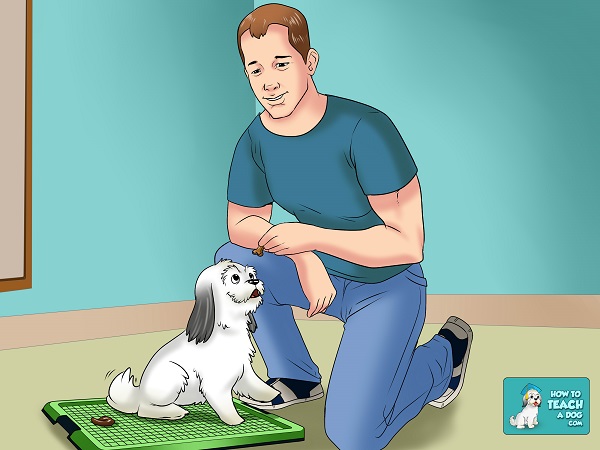
Dogs love to be praised and rewarde by their owners, and since they only understand if something is ‘right or wrong’, it is very important that you let your puppy know you are pleased with them when they relieve themselves in the correct spot. Make sure you praise your puppy after they finish going to the toilet in the correct area. You can do this with verbal praise, or use a treat. You want your puppy to associate relieving in the right area as a very positive thing.
3 – Use a Word Association Phrase

You want to choose a ‘word association’ for reliving, such as, ‘go potty’. This is a word association, not a command, because you cannot force a dog to relieve. Your goal is that eventually your dog will understand this is their opportunity to go, and they need to use this time to do so. Unlike most training commands, you can continue to repeat this to your puppy until they relieve.
4 – Establish a Routine
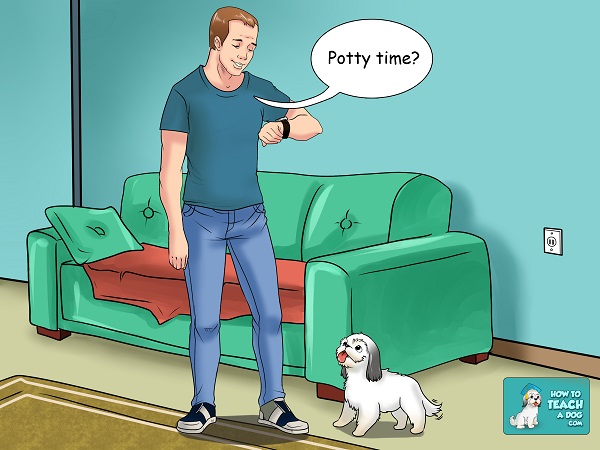
Have a schedule to take them to the relieving area frequently, and be patient! Try and feed your puppy and take them out at the same times everyday. One of the most common traps people fall into is they only give the puppy 5-10 minutes to go, and then give up. If your puppy hasn’t gone in awhile, they probably need to go, but are just too distracted to do so. Puppies need to go every 1-2 hours (depending on breed), as well as within 15 minutes of eating. If you have not had any success, but feel they probably need to go, do not just let them back into the living area to roam free. You are best to keep your puppy on a leash near you, and then try again 10-20 minutes later. Prevention is always the best way to deal with potential accidents. If your puppy is having accidents during the night, try feeding them earlier and/or taking water away after 7pm (unless it is a very hot night).
5 – Start With a Small Space
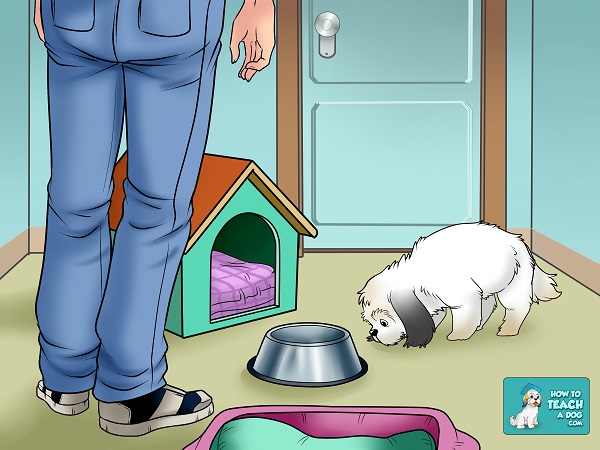
Confining your puppy to a small area in the beginning, is by far the quickest way to house train. When you are home, keep them in the room with you at all times. When you go out, put them into a small space. Dogs like small, enclosed areas, as it makes them feel secure, as well as have a place of their own they can go into to relax. The area needs to be small enough so that your puppy can literally not get away from the mess if they relive in there. Dogs do not like to sit in their own filth, so they are more inclined to ‘hold it’. If the area is too big though, they are able to simply move from one corner to the other, and avoid the mess. This then negates the effectiveness. Your space need only be large enough for your puppy to stand, turn around. In my professional opinion, a crate is the most effective tool for this, but if you are adverse to using one, a small puppy pen or small room can be used. I am a firm believer in the concept that your puppy must earn their freedom in the house. If they are constantly relieving themselves whenever and wherever they feel like it, you should not allow them to continue to roam around freely.
6 – Deal With Accidents
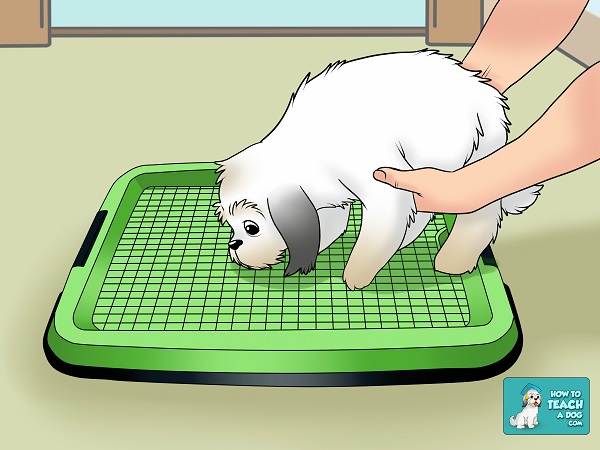
If you catch your dog whilst they are physically relieving inside, tell them ‘no’, pick them up, and put them in the appropriate relieving area. You want to be mindful not to yell at your puppy, but just use a firm ‘No’. If you yell you may scare your puppy, and they may then be reluctant to go at all. If you find an accident and you did not see your puppy actually doing it, do not say anything to them. Simply clean up the mess and move on. Dogs live in the moment. You cannot bring a puppy back to the spot they has the accident and expect them to understand what it is you are correcting them for. Learn the signs that your puppy needs to go. Most dogs sniff the floor before they pee, and circle before they poop. Watch your puppy carefully, and try to establish a pattern in their behavior just before they go. If your puppy has an accident, it is imperative that you use an appropriate product to remove the smell, so they do not want to go in the same spot again. There are a variety of enzymatic odor removal products on the market. Make sure the bottle specifically says it uses enzymes to break down the odor. White vinegar also works in the same way, and can be used on any hard floor.
Prevention is always best, and we often think our puppies have understood a concept before they actually have. Remember, even once your puppy is house broken, they will still have accidents. Puppies are easily distracted, and simply sometimes just forget to go until it is too late. Every dog can be house broken, it is just a matter of you being consistent, persistent and patient!
